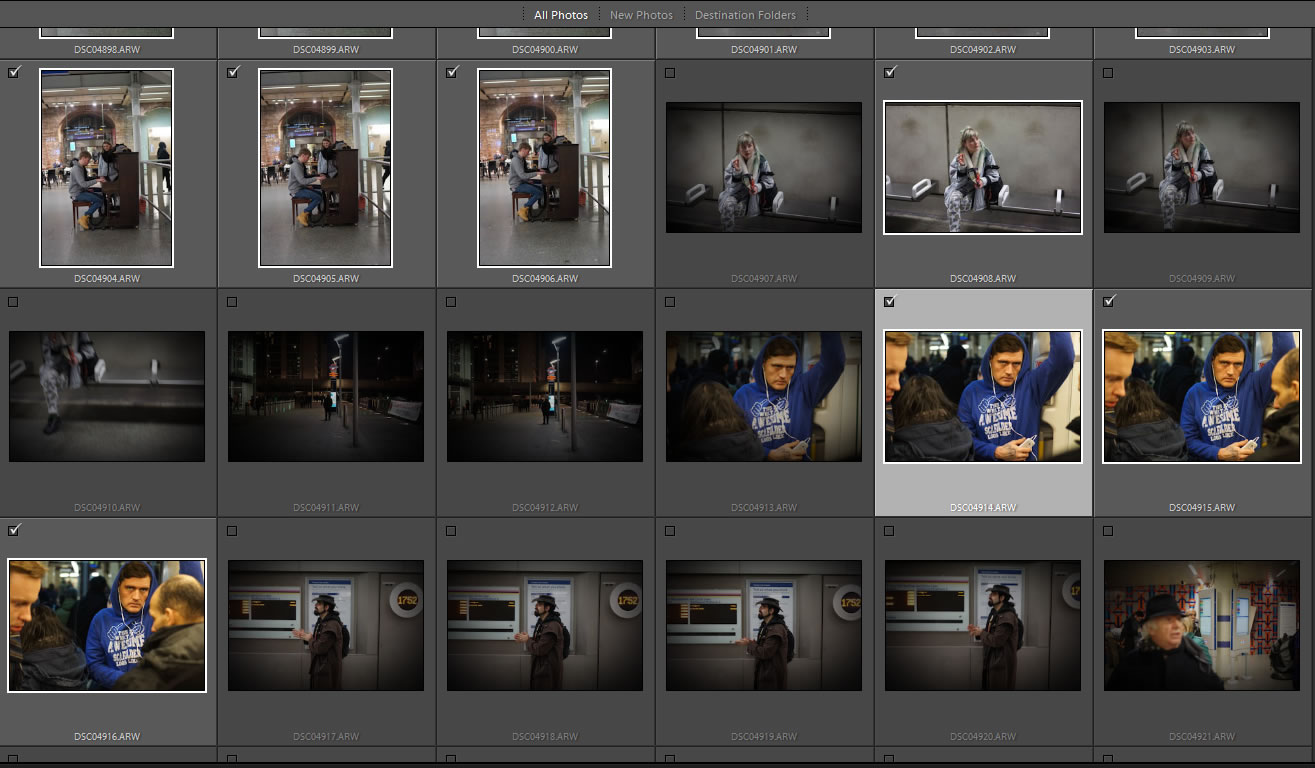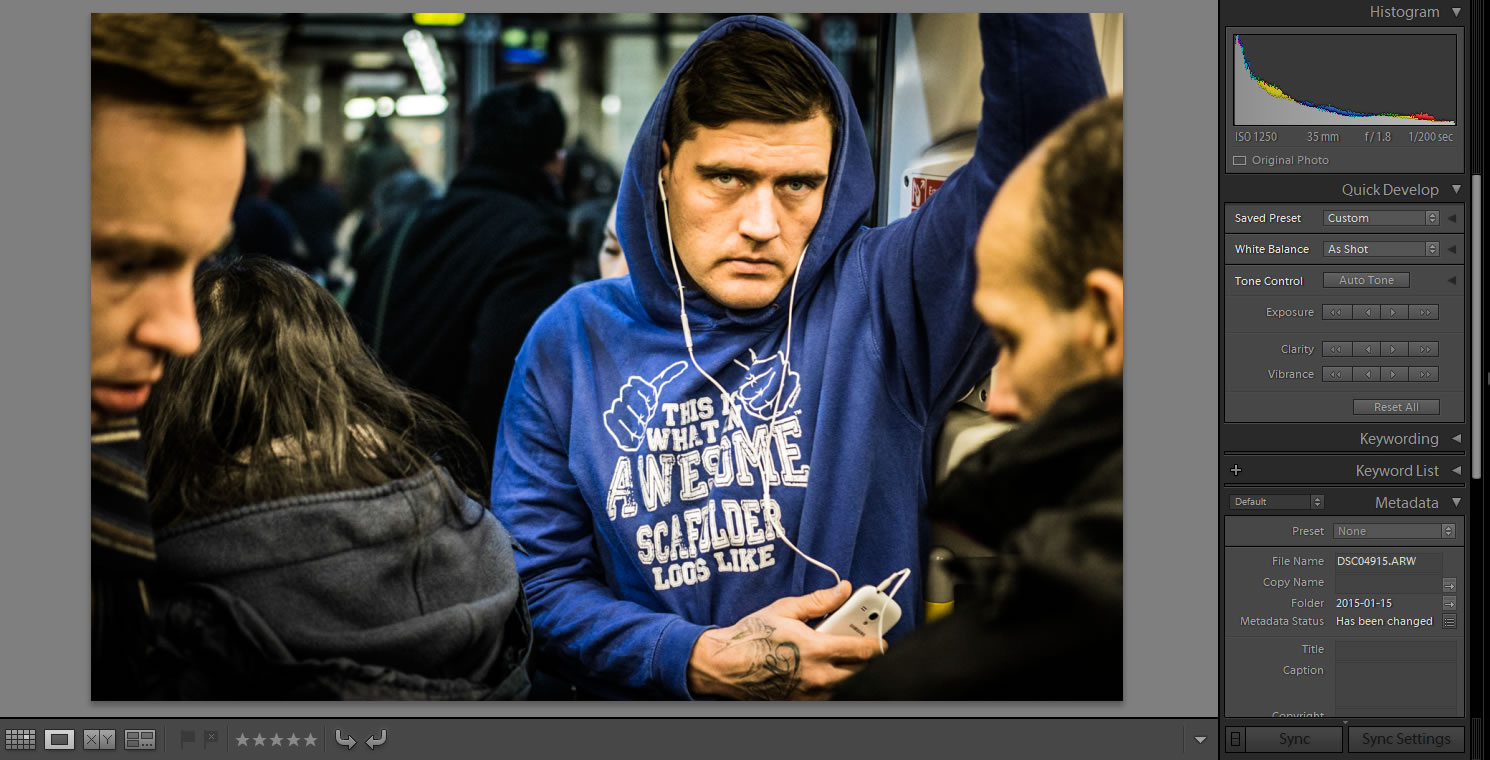There are only a few common pieces of advice I take stock in when it comes to Street Photography. With so many photographers out there trying to come up with regular blog posts you often get bombarded with do’s and don’ts that are just nonsense. But one of them will absolutely improve your photography, edit your work like a beast. I have a process, it’s very simple and it removes a lot of the hand wringing you get when trying to whittle down your work. I call it the four edit process.
Stage 1. Import
In the import screen don’t just import everything. I used to do that and would carefully go through each image looking for something that I could use in each one. But some shots are not even worth importing and your hard drive will thank you for getting rid of them right at the start. Make the thumbnail size large enough to weed out the missed, out of focus and just plain rubbish shots.
Stage 2. Process.
Now go through your images and decide which ones to process. If you’ve done stage one really well you should be processing most of the ones you’ve imported because you’ve deemed them worthy to live on your hard drive. The ones you thought might be ok but when looking at them large won’t cut it should be deleted completely.
Stage 3. Export.
Now of the processed images decide which you will export to jpg and at this stage in Lightroom you could probably lose a couple. Once they are in your folder on your drive open them in your image viewer and go and weed out the ones that aren’t as good as the rest. Be vicious, you’ve got this far so be really strict with yourself and even if you think a picture has potential, if it doesn’t stack up to the others in the folder, leave it behind (but don’t delete it).
Stage 4. Publish.
My online platform is Flickr, it’s where I put everything and see how it performs. I upload the images to my account but set the visibility to just me. This gives you another opportunity to view them in context with your other images in your photostream and every morning I set a new image to public and post it on my Facebook, Google+ and Twitter streams. The result of this is that some images never get published, they stay in my photostream unseen because I shot something better the next day.
The result is you publish the very best of your work but you get to contextualise it with the stuff that nearly makes it but not quite, which I think is sometimes the most valuable comparison.
Check out my Flickr page





